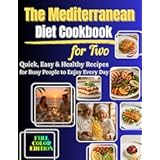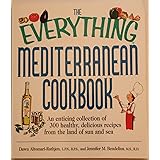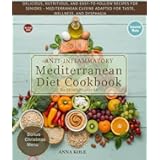Statistically, a significant percentage of adults worldwide struggle with achieving and maintaining their weight loss goals, often feeling overwhelmed by conflicting dietary advice. While the journey to effective fat loss can seem complex, the video above succinctly presents a highly focused approach: a very low-carb, discrete meal structure centered around specific nutrient-dense foods. This strategy, often referred to as a ketogenic or carnivore-leaning diet, emphasizes consuming meals designed to dramatically reduce carbohydrate intake, thereby shifting the body’s primary fuel source. For many, adopting such a targeted fat loss diet can unlock significant progress, especially when conventional methods have fallen short. Understanding the underlying principles and practical applications of this direct approach is key to harnessing its potential for profound body composition changes.
Understanding the Principles of an Effective Fat Loss Diet
The core message from the video suggests a powerful strategy for profound fat loss: keeping carbohydrates as low as possible. This approach is rooted in the metabolic shift it encourages within the body. When carbohydrate intake is severely restricted, the body transitions from relying on glucose for energy to burning fat, producing ketones as an alternative fuel source. This state, known as ketosis, is highly effective for fat mobilization, as it directly taps into stored body fat. Imagine if your body could become a fat-burning machine, constantly utilizing its reserves; that is the goal of an ultra low-carb regimen.
1. The Power of Ultra Low-Carbohydrate Eating
Minimizing carbohydrate intake, as advocated, is not merely about calorie reduction; it’s about hormonal regulation. Consuming carbohydrates, especially refined ones, triggers a significant insulin response. Insulin, while vital, is also a fat-storage hormone, signaling the body to hold onto fat and prevent its release. By drastically lowering carbohydrates, insulin levels remain stable and low, creating an optimal environment for fat breakdown. This metabolic environment enhances the body’s natural ability to access and burn stored fat, making it a cornerstone of an aggressive fat loss diet strategy. It’s a deliberate move to switch your body’s primary energy source, promoting sustained fat utilization throughout the day.
Optimizing Meal Frequency for Accelerated Fat Loss
Beyond carbohydrate restriction, the video highlights the importance of eating discrete meals with no snacks, ideally once or twice a day. This strategic approach to meal timing is known as intermittent fasting, and it complements the low-carb methodology beautifully. By creating longer periods between meals, you extend the time your body spends in a fat-burning state, further enhancing the benefits of carbohydrate restriction. This practice not only simplifies your daily eating routine but also strengthens your body’s metabolic flexibility, teaching it to efficiently switch between fuel sources. Imagine if you could spend more hours each day burning fat without actively thinking about food; that’s the advantage of structured meal timing.
2. Embracing Discrete Meals and Intermittent Eating
The concept of “no snacks” is crucial here, as even small carbohydrate-containing snacks can spike insulin and interrupt the fat-burning process. Instead, focusing on one or two substantial, nutrient-dense meals allows your body to fully process and utilize the nutrients before needing another feeding. This practice cultivates greater satiety, reducing cravings and the mental burden of constant food choices. Furthermore, the extended fasting windows encourage cellular repair processes, including autophagy, which can contribute to overall health and longevity. It’s a disciplined yet liberating approach, designed to maximize your body’s natural fat-burning rhythms while minimizing metabolic disruptions throughout the day.
Prioritizing Nutrient-Dense Foods for Satiety and Results
The video explicitly recommends a simplified food list: beef, butter, bacon, and eggs (BBB&E). This selection isn’t arbitrary; these foods are incredibly nutrient-dense, packed with high-quality protein and healthy fats, which are essential for satiety and metabolic health. Protein is crucial for preserving lean muscle mass during fat loss, while healthy fats provide sustained energy and support vital bodily functions. These foods naturally contain very few carbohydrates, aligning perfectly with the ultra low-carb philosophy. Imagine creating meals that not only taste satisfying but actively support your fat loss goals with every bite; that’s the power of these foundational ingredients.
3. The “BBB&E” Approach: Beyond Just Taste
Beef, for example, is a powerhouse of iron, B vitamins, and zinc, alongside its impressive protein content. Butter provides fat-soluble vitamins and beneficial fatty acids, contributing to feelings of fullness. Bacon, while often demonized, offers a flavorful source of fat and protein when chosen mindfully (uncured, no added sugar). Eggs are often called nature’s multivitamin, providing a complete amino acid profile, choline, and various vitamins and minerals. These foods work synergistically to keep hunger at bay, prevent nutrient deficiencies often associated with restrictive diets, and provide the building blocks your body needs to thrive while losing fat. This curated selection helps simplify meal planning, reducing decision fatigue and making adherence much easier for those committed to a strict fat loss diet.
Navigating Your Journey on a Fat Loss-Focused Plan
Embarking on such a targeted fat loss diet requires an understanding of both its potential and practical application. While the principles are straightforward, individual responses can vary, and careful attention to your body’s signals is important. Ensuring adequate electrolyte intake, especially during the initial transition to a very low-carb approach, is critical to avoid common “keto flu” symptoms. Hydration also plays a vital role in metabolic function and overall well-being, supporting your body as it adapts to burning fat. This holistic approach ensures that while you’re focused on fat loss, your overall health remains a priority.
4. Practical Tips for Sustained Success
Beyond the core food recommendations, consider including other low-carb, nutrient-dense animal products like lamb, pork, or poultry, and perhaps some fish, to ensure a broader spectrum of micronutrients. Listening to your body’s hunger cues, rather than eating out of habit, will become more intuitive with discrete meals. Remember that consistency is paramount; sticking to the principles even when faced with temptations will yield the most significant results. Integrating gentle physical activity, such as walking, can further enhance fat utilization and contribute to overall health without overstressing your system. This comprehensive approach to a fat loss diet sets the stage for remarkable and sustainable body transformations.
Ultimately, a highly focused, very low-carb, and nutrient-dense eating strategy, as outlined, offers a powerful pathway for significant fat loss. By prioritizing discrete meals of high-quality proteins and fats, and minimizing carbohydrate intake, individuals can create an optimal metabolic environment for burning stored fat. This targeted fat loss diet simplifies nutrition while maximizing physiological benefits, guiding the body toward efficiency and effective body recomposition.











